As someone who advocates for Serbia’s entry into the European Union, is that this is the first time the EU has a clear and concrete economic interest in cooperation with Serbia
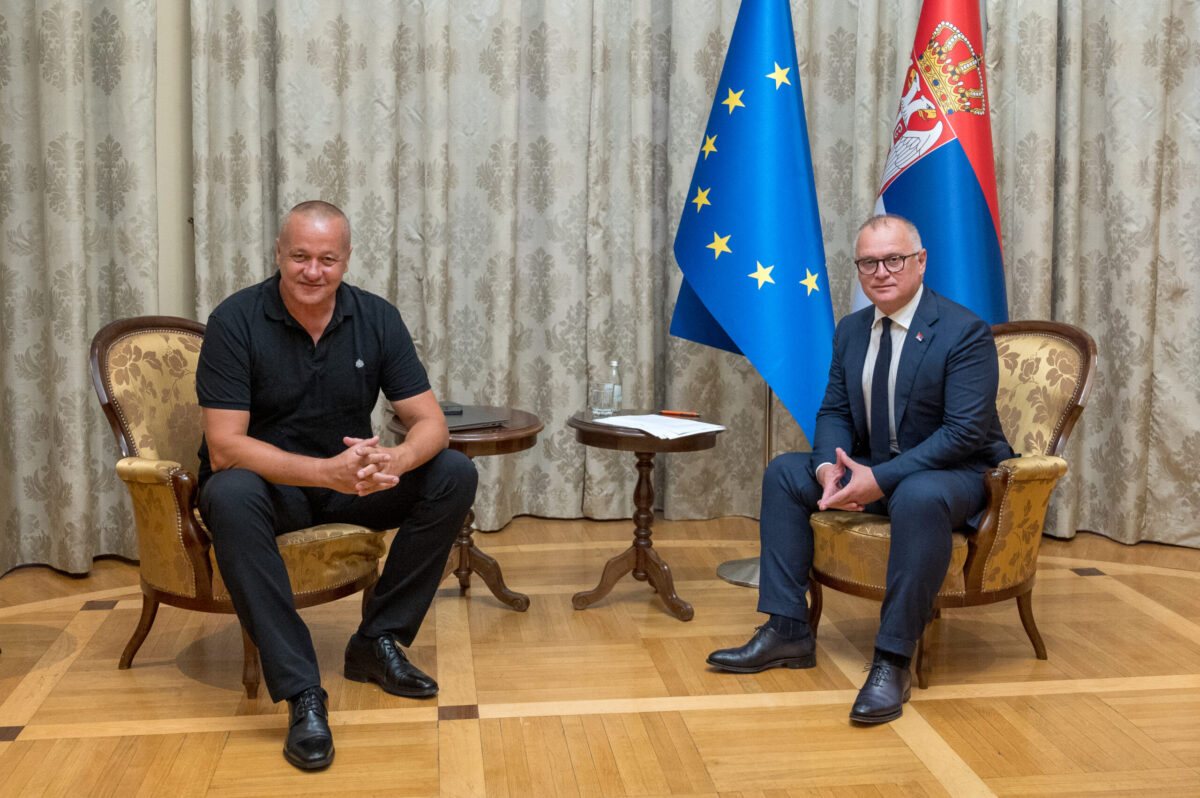 Regarding the special edition of InFocus Real Estate, we had the opportunity to speak with Goran Vesić, the Minister of Construction, Transport, and Infrastructure, who provided a detailed overview of the infrastructure plans, openly discussed lithium excavation, and commented on the real estate market in Serbia.
Regarding the special edition of InFocus Real Estate, we had the opportunity to speak with Goran Vesić, the Minister of Construction, Transport, and Infrastructure, who provided a detailed overview of the infrastructure plans, openly discussed lithium excavation, and commented on the real estate market in Serbia.
Thank you for the opportunity to speak with Diplomacy & Commerce. Let’s start with a topic that is currently back in the public spotlight, the Jadar project. What is your stance, and what is the role of the ministry you head in implementing this project?
In the meantime, the Government of the Republic of Serbia has signed a contract with Germany and the European Commission. What the citizens of Serbia could see is that the project will involve European partners and that, as the president said, over 85% of the ore will remain in Serbia. There will be a chain of factories to process it into finished products like batteries and car factories, providing a significant portion of raw materials for the European auto industry. This aligns with Europe’s policy that all deposits on European territory should be used by European companies.
What I can tell you, as someone who advocates for Serbia’s entry into the European Union, is that this is the first time the EU has a clear and concrete economic interest in cooperation with Serbia. I believe Serbia has essentially entered the EU with this agreement. The formal entry will happen in the coming years; we will likely be the first country, possibly alongside Montenegro from the Western Balkans, to join, but this is a historic agreement for us.
What is important for the citizens is that, as the environmental impact assessment study is currently being conducted, the best European institutes will participate, in addition to our institutions, and we will do this with the help of our partners from Germany, who have extensive experience in this area. The highest European standards, which apply in every other EU country, will be applied. We can confidently say that the project will be environmentally friendly.
This means nearly 20,000 new jobs, both directly and indirectly, in other companies. There aren’t 20,000 unemployed people in that region today. People will relocate, salaries will be better, and this means approximately 6 billion in investments. Last year, our investments were 4.5 billion, and this year, in the first 3 to 6 months, they were 2.3 billion. This is a huge gain for us, an increase in GDP, higher wages, and higher pensions.
The construction of the entire infrastructure in the western part of Serbia, such as the continuation of the fast road, which will be completed this year, from Šabac to Loznica, another 21 km to Mali Zvornik, and a bypass around Loznica. We will work on reconstructing the Ruma-Šabac-Loznica railway, which is part of the Belgrade-Sarajevo railway. Thus, we will have a connection between Sarajevo and Belgrade with a railway capable of speeds of 120 km/h. The construction of a new railway between Valjevo and Loznica will connect that region with the Belgrade-Bar railway. This is almost 1.7 billion euros of investment just in infrastructure, which will be a significant project.
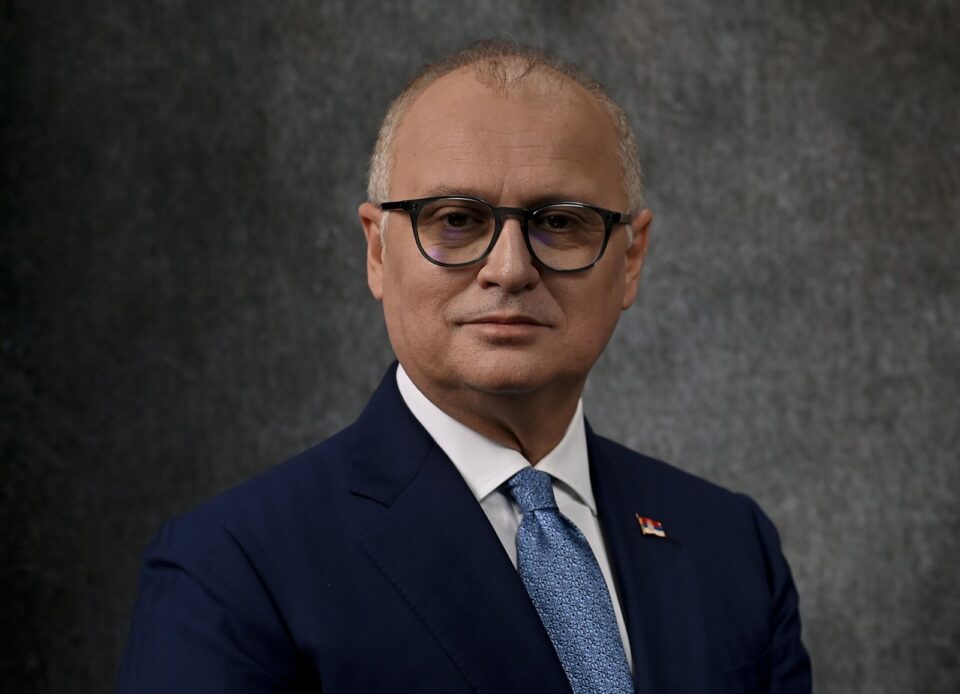 And that is something your ministry will be directly involved in?
And that is something your ministry will be directly involved in?
That’s right. This project will bring a new life to Serbia, and Serbia’s GDP will significantly increase. For example, the benefits we will gain from this project will be comparable to what some of our neighboring countries earn from tourism. We will become a more developed country with better wages and a higher standard of living.
The biggest concern for some members of the public is exactly what you mentioned—the fear of environmental impact. So, do you believe that it will be done according to European standards and in partnership with European companies to alleviate these concerns, which might not be the case otherwise?
There have been many falsehoods spread about this. Unfortunately, the project has become part of a political battle. When something becomes part of a political battle, all means are used. We want to bring the discussion back to what it should be, which is to talk about all the environmental impacts. Be assured that our European partners, especially from Germany, will be actively involved because this is now their project as much as ours. We will certainly ensure that all standards are upheld in Europe, as they are in Serbia and the EU. The public will be informed. According to our law, the study and its adoption involve a public hearing and public participation, so everyone will have the opportunity to express their opinions. I am confident that afterward, some people who may have been swayed by certain insinuations will understand what is happening and how it will be handled.
We will certainly ensure that all standards are upheld in Europe, as they are in Serbia and the EU
How are the works progressing on the high-speed railway Novi Sad-Subotica, and will it be opened by the end of the year as announced?
Yes, it will. It will be opened at the end of November or the beginning of December. By the end of this month, we will complete the high-speed railway, with only the station buildings remaining to be finished. For example, the Subotica station building will be completed by the end of August, the Novi Sad station is already finished, and the new station in Vrbas is nearing completion, among others.
Which stations are new, and which old ones have been reconstructed?
We have three new stations: in Vrbas and a new station between Mali Iđoš and Lovćenac. This is a completely new station. The stations in Subotica and Novi Sad are being reconstructed, with the Novi Sad station being particularly demanding as it is protected as a cultural heritage site.
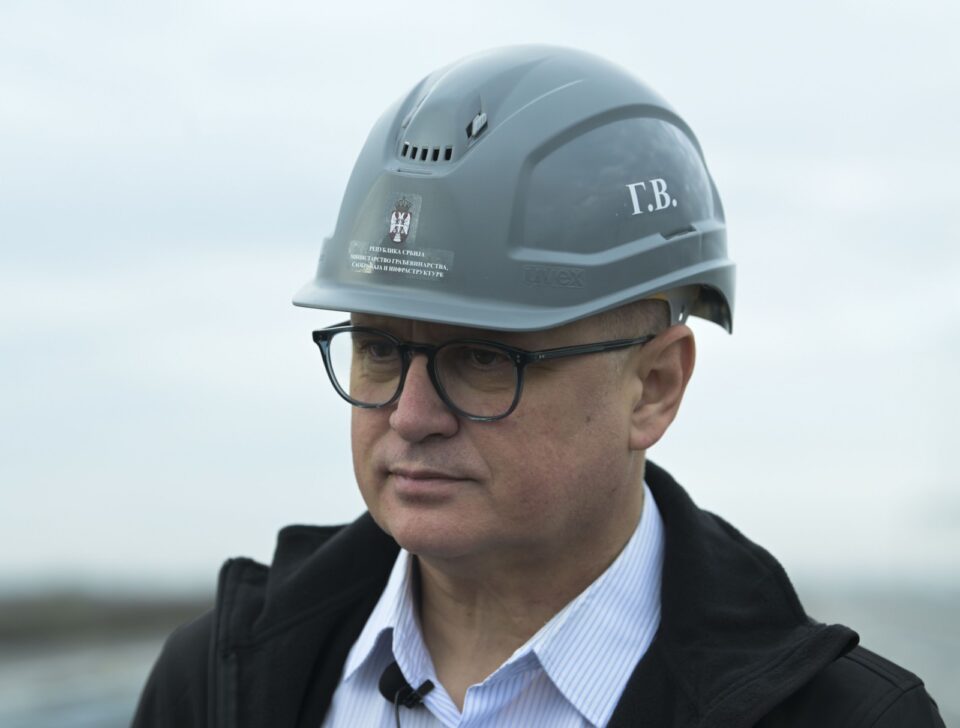 The Subotica station is quite old?
The Subotica station is quite old?
That’s right. I’m very happy that the Subotica Institute for the Protection of Cultural Monuments participated in the restoration. They did an excellent job restoring the old hall, which now looks like it did at the end of the 19th century when it was built. You’ll see, it will be one of the most beautiful railway stations we have. There are still some works to be completed on the sidings in the stations. Starting in early August, we will begin with static and then dynamic testing. On September 23, Deutsche Bahn, the German railway company, will conduct the technical acceptance of the railway, which is the dynamic testing phase, expected to last until October 15.
Are the trains already here?
The trains are here; these are Stadler trains that are already in operation. For the service to Subotica, we need new trains. The new Chinese trains, which are currently being certified in Prague to meet all EU standards, are important for the Budapest route. With the existing trains, we can easily maintain the schedule. The high-speed train will run every hour, stopping at four stations.
The focus is now on the Belgrade-Subotica line. What about the other branches from Belgrade, such as towards Zagreb via Šid, to Niš, and from Vršac to Timișoara? There was some issue with the Romanians, which caused delays.
That was a silly issue, I must say. When our railway companies were divided, there was an outstanding debt to the Romanian railways, and it wasn’t clear which company should pay it. I recently had a meeting with the Romanian ambassador, and representatives from my ministry went to Romania, and we are now resolving it. The railway towards Romania is being designed; we just completed the tender process for the Beograd-Vršac-Romanian border project, funded by the World Bank. I hope we can start reconstruction relatively soon.
In the next eight years, no property in Serbia will be able to be sold without an energy passport
That railway is currently active, with six departures daily, and it’s quite decent within the current framework.
As for the Belgrade-Šid railway, we’ve completed the project; it is designed for a speed of around 200 km/h. However, we won’t proceed with this railway until we get a response from Croatia about whether they want a high-speed railway or not. I had a meeting with the Italian Minister of Transport, met with Slovenian Minister Malenka Bratušek, and spoke with Austrian colleagues. They are all interested in a high-speed railway, but we still haven’t received confirmation from Croatia. Once there is a unanimous decision to proceed, we will move forward. As far as we are concerned, we are ready. The railway on our territory is only 90 km, and we have already completed the project.
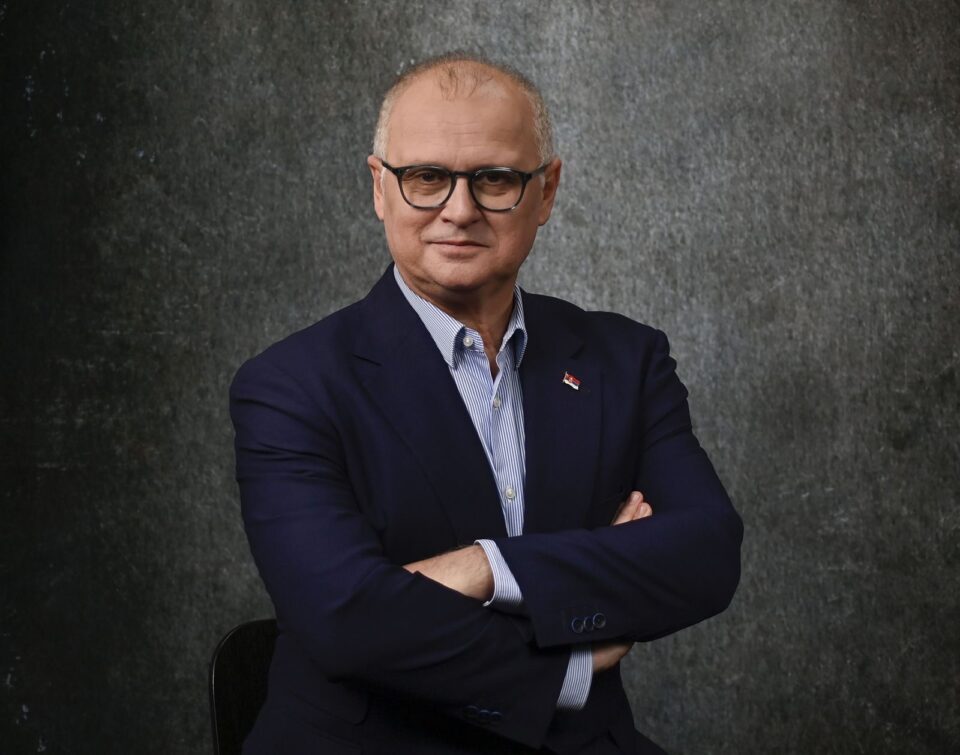 Let’s touch on the real estate market. How can we maintain the quality and price level of real estate in conditions of hyperproduction, especially in the most sought-after locations such as Belgrade, Novi Sad, Zlatibor, Kopaonik, and recently Vrnjačka Banja and other places in Serbia?
Let’s touch on the real estate market. How can we maintain the quality and price level of real estate in conditions of hyperproduction, especially in the most sought-after locations such as Belgrade, Novi Sad, Zlatibor, Kopaonik, and recently Vrnjačka Banja and other places in Serbia?
The market needs to handle this. The fact is that we have seen a 22% increase in the construction industry in the first quarter of this year in current prices. Overall, there was an 8.30% increase in the number of completed works. We are one of the few countries experiencing this growth. This is a result of the elimination of conversion fees, which freed up many locations. We have also worked to introduce green building certificates through amendments and additions to the law.
This means that from 2026, all buildings larger than 10,000 square meters must be constructed according to green building certification standards, using one of several global certificates. Firstly, ecological materials must be used, and there is an additional verification process. To obtain a certificate, a project must be certified. We are working with the Faculty of Civil Engineering and the Faculty of Technical Sciences in Novi Sad to prepare a project for a domestic green building certificate. This will be great to have, but it will take years to fully implement. All those who build according to green building certifications will receive a 10% discount on the construction land they purchase.
We want to encourage quality construction and ecological building practices, including the use of ecological materials. This is something we are preparing for. From 2028, everyone who wishes to design will have to do so using the BIM model, which is the latest model in the world. Perhaps only one or two EU countries require designing in the BIM model as Serbia does, putting us ahead of many countries. This model allows for higher quality and easier construction, helping to avoid conflicts during the building process, which is fantastic.
Remember, within the next eight years, no property in Serbia will be able to be sold without an energy passport. For new buildings, the energy passport is a mandatory part of the purchase agreement. By August 2026, all state-owned companies and buildings must have an energy passport. For example, this building we are in will need one. Two years later, all company-owned buildings must have precise information about the building’s energy properties by 2033, so buyers know what they are purchasing and whether they will spend a lot on heating or cooling.
This is not the case now; people often buy a “pig in a poke.” This is very important for citizens. All these changes have been introduced through amendments to the Planning and Construction Law.
Additionally, in the next few years, the deadline will expire for removing air conditioners from the facades in all cultural and historical areas. We will start with those areas and then move on. This must happen within the next four years. It is unheard of to have air conditioners on protected buildings.
The fact is that we have seen a 22% increase in the construction industry in the first quarter of this year
Another topic in the public eye is EXPO 2027. What exactly is the timeline for preparing for the EXPO 2027 world exhibition, as it seems there isn’t much time left? This includes roads, railways, the national stadium, the new fairgrounds, the natural history museum, etc. There are a lot of different pieces of information in the public domain, so it would be good to have everything from your ministry’s perspective in one place, as much as possible at this moment.
Regarding EXPO, my ministry is responsible for the railway. We will start working on the railway at the end of this month and aim to complete it by the end of 2026. The railway will go from Zemun Polje, cover the center of Surčin, the national stadium, and Nikola Tesla Airport, which is very important for us. According to EU standards and new directives, in the coming years, all airports with over 12 million passengers must be connected by rail. We anticipate that Nikola Tesla Airport will handle over 10, and possibly over 12 million passengers within the next 3-4 years.
This is significant for you, for example, as you could travel from Novi Sad to the airport by train once the railway is completed.
One of the questions on social media was about this. Currently, Novi Sad does not have a direct bus connection to Belgrade Airport.
This will be much more convenient; you can get off at Zemun Polje station, catch a train every 10-15 minutes, and you’re there.
Tomorrow, people from Niš or Valjevo won’t need to use their cars, which is very important.
EXPO 2027 is extremely significant for Serbia’s image. That year, we will be the business center of the world. We expect 3.5 million tourists in Belgrade alone during the EXPO. These are wealthier tourists who will explore other parts of Serbia, and some will return. Moreover, this event is a development opportunity for Serbia. It’s always amusing when I hear some people say that EXPO isn’t important. Both the Americans and the Spaniards competed for this EXPO. If it was important to them, it should be important to us.
We are a country that needs such events. We present ourselves not only to foreign companies but to others as well, as a country where business can be conducted, which is fundamentally significant.
EXPO 2027 is extremely significant for Serbia’s image
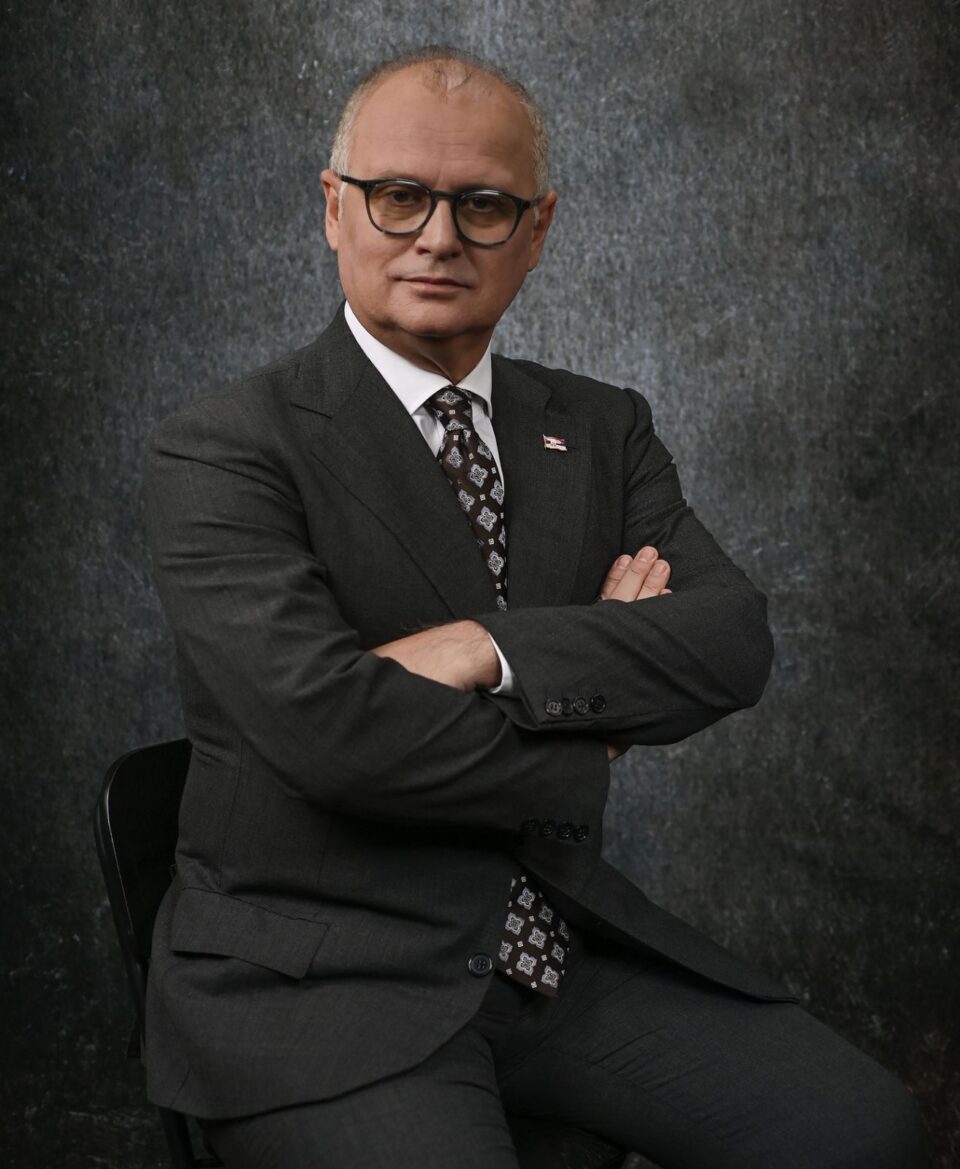 In addition to regular state duties, you’ve often been present in the public eye as an author of columns and books, mostly on the topic of Belgrade. Is there anything else you’re focusing on, and what can we expect soon from that segment?
In addition to regular state duties, you’ve often been present in the public eye as an author of columns and books, mostly on the topic of Belgrade. Is there anything else you’re focusing on, and what can we expect soon from that segment?
Firstly, I’m about to sign a contract with a Chinese publisher for the printing of my book about Belgrade in China. I’ve already published it in Chinese, but only in Serbia. Secondly, along with Miha Marič, my colleague from the University of Maribor, I’ve released a textbook on the use of social media in political campaigns. Miha helped me a lot by adapting my text into a textbook format.
We’ve published it in Slovenian, Serbian, and English. Pearson, one of the largest textbook publishers in Europe, published it. I expect the book to be available in Slovenia and Serbia within the next month. I’ll be teaching as a guest lecturer at the University of Maribor and will start focusing on that.
As someone on the Serbian political scene who was one of the earliest and probably the most extensive users of social media, even those initially considered unsuitable for our generation (laughs)
This book is interesting because it’s based solely on my examples. Each story has its barcode, so as you read the book, you can scan the code with your phone and watch the examples. I believe it’s one of the first such books in Serbia. I’ll also start teaching at several universities. I already have one book, co-authored another with Miha that has already been published in Slovenia, and by the end of the year, I’ll be a co-author on another book, so I’ll have three books, three textbooks, which allows me to pursue an academic career, something that hasn’t interested me until now.
I’m hoping to release my memoirs for the book fair. I’ve been on the political scene for a long time, and a part of life needs to be documented before I forget it (laughs). I’ve been in politics since 1989, and it’s been over 30 years, so it’s time to record it. The memoirs will cover my political work from 1989 to 2013, focusing on those 24 years.
Journalist Aleksandar Apostolovski and I had the idea for this book; he turned it into 26 or 27 stories. These aren’t classic memoirs; they do cover my political career, but they are not about my personal life. The book will be published by Prometej from Novi Sad, my publisher, and I hope it will be ready for the book fair. You’ll read stories about October 5th and various events and personalities, from Đinđić to Schröder, Dick Cheney, Blair, Ratko Mladić, Radovan Karadžić, Vuk Drašković, Sloba Milošević, and Mira Marković. It will be my perspective on those events. Every such book is subjective, as it’s based on personal accounts, but I hope it will be interesting.
Next year, a third book on Belgrade will be published. I write columns in Politika every Friday, and then we select the best ones to publish as a book, so there’s no need for additional writing. Those are my publishing plans for the future.
About Electric Chargers
Our highways and expressways must be equipped with infrastructure for electric cars to remain competitive, as Serbia is a transit country and must take advantage of this. I believe this was the last moment to start building such infrastructure, which is why my goal is to have roads adequately equipped with electric chargers. Therefore, the Ministry and the Public Enterprise “Roads of Serbia” selected a contractor through a tender to equip 16 green oases on highways with at least five and up to 20 electric chargers each. I am particularly pleased that the contract was awarded to a domestic company from Rekovac, which specializes in manufacturing electric chargers. They can transform the 16 rest areas along the roads into “green oases” by installing chargers, and opening shops, cafes, or similar facilities where travellers can rest and comfortably spend time while waiting for their vehicles to charge. They are allowed to install between five and 20 electric chargers at each location, meaning there will be at least 80 and up to 320 chargers in total. By the end of November, we will have six green oases with 30 electric chargers on the highways. By May of next year, all 16 rest areas will be equipped, and I believe we will soon reach all 320 electric chargers on the roads. Additionally, changes to the Law on Planning and Construction require fuel stations to have at least one electric charger at four locations. This is not a luxury but a necessity, as more and more people in Europe are driving electric cars, and without the appropriate infrastructure, they will bypass us. This is why we are doing this: so that Serbia will soon be the country with the best equipment and the best electric chargers on highways in the region, which means that we will attract electric vehicle drivers to use our roads, benefiting the country financially.
· One of the most common reasons, both here and worldwide, for not purchasing electric cars is the lack of charging infrastructure.
· Serbia has made great efforts over the past 18 months to improve the infrastructure for electric vehicles, and we will be the best in this part of Europe.
· Currently, we have 8 CHARGERS installed at toll booths. By April next year, we will install 10 more chargers at toll booths, and on the Morava Corridor, there will be 16 more chargers (eight on each side) by the end of next year. These are emergency chargers for when the battery is low.
· The Roads of Serbia conducted a tender to transform the existing 16 rest areas on the highways into “green oases.” Each green oasis will have between 5 and 20 chargers, as well as a café, shop, restroom, and children’s playground with solar panels. These green oases will have at least 80 and up to 320 chargers, depending on demand. By November, six oases with 30 chargers will be set up, and every month until May next year, two more oases will be established, meaning there will be a total of 80 new chargers for electric vehicles by May.
· WHEN EVERYTHING IS ADDED UP, WE CURRENTLY HAVE 8 CHARGERS ALONG ABOUT 1,000 KM OF HIGHWAYS, AND BY THE END OF NEXT YEAR, WE WILL HAVE 106 NEW CHARGERS, BRINGING THE TOTAL TO 114 CHARGERS.
· At the country’s entry points, we are installing HYDROGEN CHARGERS because more trucks (and ships) are using hydrogen.
· With the amendments and additions to the Law on Planning and Construction (LPC) from August last year, we mandated that EVERY FUEL STATION ON THE HIGHWAY must have ONE CHARGER FOR ELECTRIC CARS for every FOUR FUEL PUMPS, which amounts to 4-5 chargers per station. This requirement will start from January 1st of the next year.
· The amendments to the LPC also mandate that in every new building, at least ONE PARKING SPACE must be equipped with electric car charging equipment for every FOUR PARKING SPACES, and in business facilities, for every THREE parking spaces.
· The amendments to the Traffic Safety Law propose that license plates for electric cars should be green (as in China) and have stickers, allowing us to offer discounts on tolls and parking.
· The Ministry of Construction, Transport, and Infrastructure (MCTI) is preparing the Law on Alternative Fuel Infrastructure, which will require all government agencies and legal entities to have infrastructure for alternative fuels. The law will be adopted by the end of the year and is aligned with the European directive. Currently, only a few EU countries have such a law, while others are in the process of adopting it.
· The MCTI is currently working on a study with the Faculty of Technical Sciences in Novi Sad to install solar panels in the protective zone of existing highways (we have about 1,000 km, which means potentially around 2,000 km). Once the study is completed, a tender will be announced. Solar panels in urban areas will serve as noise barriers and will be made from recycled materials. This means we will be producing “green electricity” on our highways.
· The state has been providing a subsidy of 5,000 euros per purchased electric car for several years.